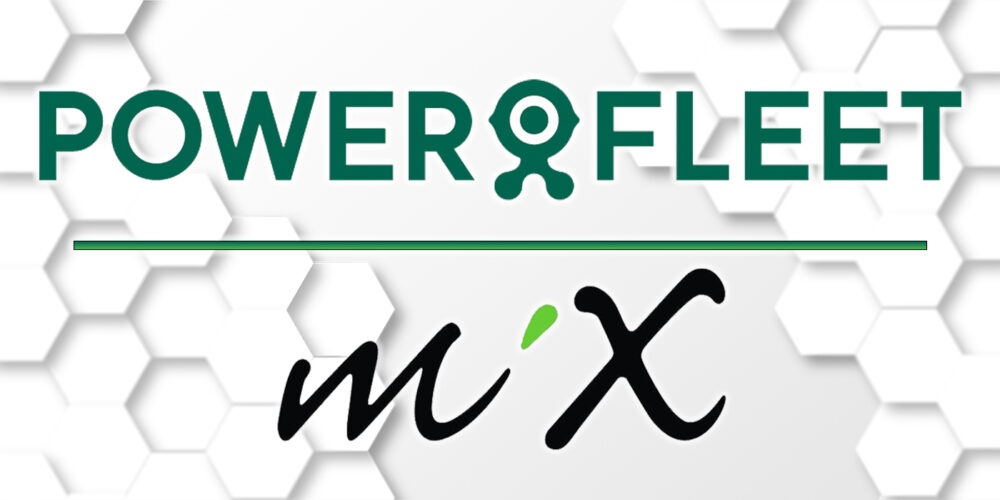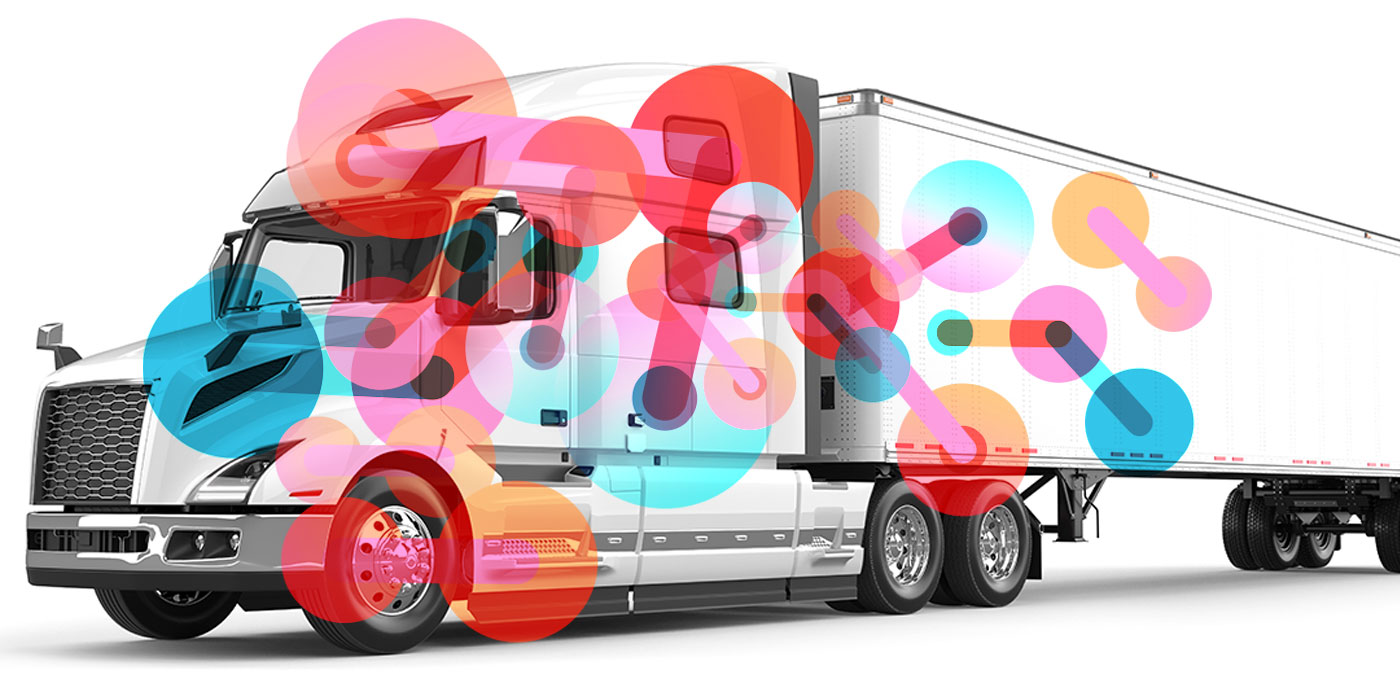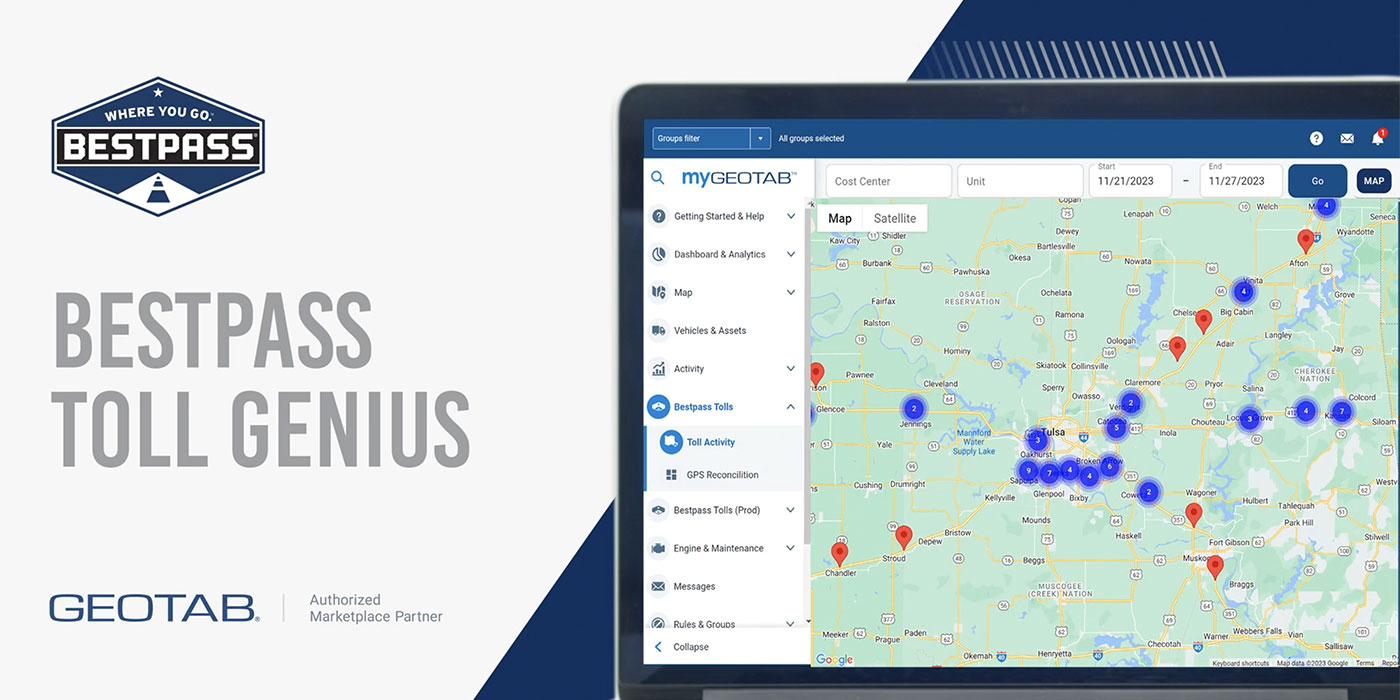What it all means
In the telematics world, data is data. The difference is how you use it.
“The problem with telematics today is that it gives you reams of information at the end of every month—how fast trucks traveled to customers; how much time they spent there; even how often the drivers wore their seatbelt—and the poor fleet manager says, ‘Okay, well, now what? What do I focus on?’” Neil says. He then teases a new product launch coming in the next six months to help fleet managers answer that question.
Yet the way that Geotab developed that solution and all of the solutions it has offered up to this point are grounded in the company’s first few years.
“What we did as an organization, even before we thought about taking data from a vehicle, is we put Big Data to work for us,” he says. “Every work order, every time a device was manufactured, every customer support call, every billing line item, every API call on the servers, every login attempt, every piece of diagnostic data—everything, including all of our vehicle device data. When we were first doing this, we didn’t know what the data was saying, but we have a motto: ‘You can’t manage what you don’t measure.’
“We started slicing and dicing the data; carving out one data set and comparing it against another. For example, we saw an increase in the number of support calls that we had and could relate that back to a particular batch of devices that was manufactured by a specific manufacturer, and I realized that we had a bad batch with lots of failures in it. It let me be proactive in dealing with that. When you start looking at all that data, and you realize: ‘Wow, incredible insights.’”
Today, every single department at Geotab—from administration to engineering to customer service—has its own Big Data expert who is dedicated to doing one thing: Analyzing the department’s data.
If you’re a fleet just getting started with telematics, Neil lays out five areas of focus.
- Productivity: Whether your trucks are being as productive as they can be.
- Fleet management: Odometer readings, engine hours, service needs, etc.
- Safety: Saving lives, reducing incidents and boosting the bottom line.
- Compliance: One acronym: ELD.
- Bringing it all together: Integrating data sets, communicating between departments, and anything else you can dream up.
Start with any bullet point one through four. Then collect the data, analyze it and act on it. After that, move on to the next bullet point, building on what you learned. Once you’ve mastered those four, you can tackle number five and…
Bring it all together.
This is the stage where most of the telematics providers, from OEM to third party, are right now. Truck data has been amassing for years, and companies like Geotab have been crunching the numbers to see how they fit together in order to offer more actionable dashboards, notifications and beyond.
One of the biggest solutions brewing behind the scenes at Geotab is benchmarking.
“What we’re trying to do is figure out how you can benchmark your fleet against another fleet. Do you fit in the bottom percentile for safety? Are you in the top percentile? Could you be using more efficient vehicles? Are your drivers’ behaviors good or bad?” Neil says.
With a Geotab device installed in more than 1.3 million vehicles on the road, the company has the data. As a fleet, your top concern should be: How is my data being used? Now is when we come to Geotab’s modus operandi:
‘Do good with data.’
“As an OEM or a telematics company, you have a digital obligation—a moral obligation—to make sure that the data is only used for good,” Neil says. “This is Geotab’s take on it: We will never, ever, ever send customers’ raw data outside of the organization. We will never send GPS data or any raw information outside of the organization.
“What we will do is we’ll aggregate the data, analyze the data and produce data sets that are completely anonymized and good for our customers and good for the company.”
Determining data morality is tricky. Different points of view can shade opinions of right and wrong. The data usage policies your fleet has (or should create) should find common ground with your data service providers. You need to be sure that the partners you choose will stand with you when hard choices present themselves.
“Data is a little bit of a double-edged sword,” Neil begins. “Let me give you one example: On data.geotab.com, we have 12 different data sets; we were trying to figure out the best truck stop locations. If you’re running a fleet, you probably want to know where the best parking locations are and it seems like it helps everyone. But let’s say, for example, somebody wants to steal from the trailers. Well, if they have the data, now they know where all trucks are parked. That’s the problem with data.”
Navigating these situations called for rules, and Geotab has a data morality framework. The first is that Geotab continually reviews the data and ensures that it cannot be de-anonymized.
“The next thing is that we sat down as a company and, well look, we could make a ton of money selling fleet data to hedge funds,” Neil says. “We get requests all the time from hedge funds on Wall Street saying, ‘Please sell me this set of data because then I can figure out that commerce is changing here, and this company’s doing better, and this company’s doing worse.’ We say: ‘No. There is no way that is going to happen.’ We will not allow data to be used against our customers.”
You can be sure that if Geotab is getting those kind of data request calls, then other companies in the industry are as well. As data usage evolves, Geotab continues to review and revise its end-user license agreements to clearly define its use of its customers’ data.
What is anonymized data?
Imagine the data streaming off of your trucks is a specific color of M&M. All of your M&Ms are blue. Your competitor’s M&Ms are yellow, and the fleet you have nothing to do with on the other side of the country streams red M&Ms. All of those M&Ms go into a jar—i.e. a “Big Data” repository, or “data lake”—and mix together. Anonymizing the data turns all those M&Ms brown. You can’t tell to whom the M&Ms belong, but they’re still consumable, and more importantly, delicious.
Back to benchmarking and machine learning
Geotab’s data usage rules and guiding principles roll into its benchmarking products. Data is anonymized and aggregated so that a benchmark solution can’t be used to identify the performance of a specific fleet.
It provides a thousand-foot view of performance within an application or general equipment spec, for example. Doing this type of analysis manually was too large a task, so Geotab turned to machine learning to teach its algorithms how to slice, dice and analyze the data.
“We use machine learning to understand what vehicles are used for,” Neil explains. “If it’s a long-haul vehicle, then it goes for long periods of time, traveling long distances, and it stops along the way. If you run hub and spoke delivery, then trucks always go back to the same location, pick up the goods, drop them and then return to random locations.
“Then the machine learning algorithms categorize the vehicle by how it’s being used. It doesn’t matter whether you’re delivering general goods to consumers or you’re hauling air conditioner parts. You’re on the same roads, going to those same locations, and you have the same set of problems. Now you can start benchmarking.”
At the end of the month, instead of receiving reams of data and notifications, Geotab’s goal is to provide fleet managers with five things they can do to improve the usage of their vehicles within the five areas of focus that Neil laid out earlier.
“It’ll be the thing you need to focus on next,” he says. “Maybe it’s time to replace your vehicles to boost efficiency or put a safety program in place to cut down on the number of harsh braking incidents or get drivers to wear their seat belts. It’s answering the question: What does this data mean to the fleet manager? Delivering that answer is key.”
Fleet Equipment is here to help. Our December issue is packed with data-related stories, including:
First things first: Do you really own your trucks’ data?
You can find tips on navigating end-user license agreements here.
Data integration: Who has access to your data
Lastly, we crown data as our ‘Equipment Trend of the Year’ here.














